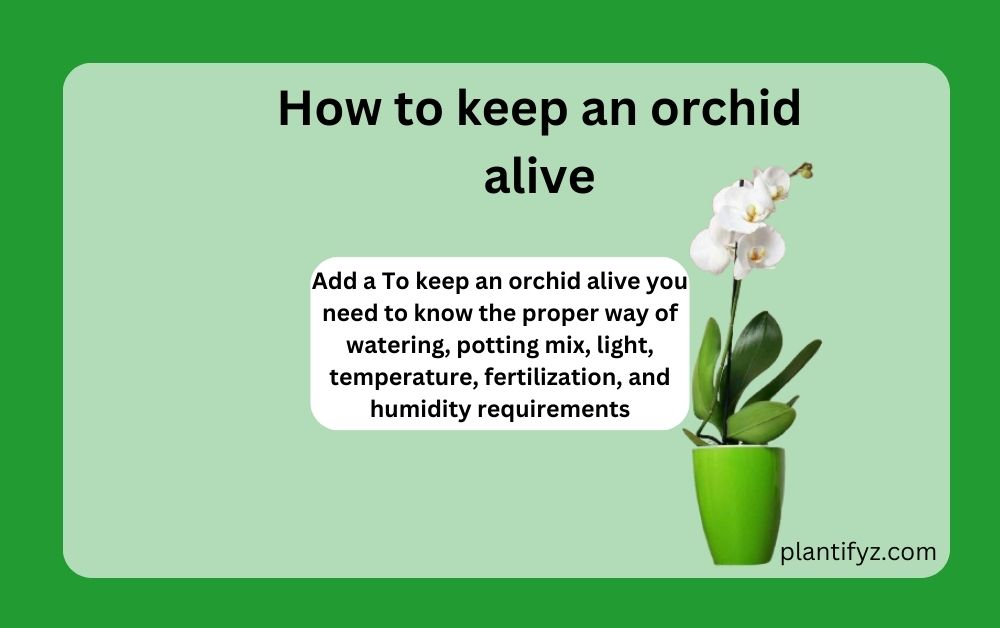You start caring for orchids after buying but somehow you are failing to keep orchid alive. To keep an orchid alive is very simple, you just have to know some care about the orchid. Maybe you already know how to care but remember, by knowing only that you are failing to keep them alive. A little mistake in care may kill your orchid.

Here you’ll know about how you can get the best output from your orchid plant.
Knowing the origin of an orchid
To get the best orchid health and flower, you have to know which orchid you have. Because mimicking the natural habitat can give a healthy orchid. Orchids have more than 25000+ species, spread all over the world. Different species live in different weather. For example, some “x” temperature is better for “a” orchid, and “y” temperature is better for “b” orchid. We can’t discuss the all of the orchid origins. So better if you know which species you have.
The most common orchid Phalaenopsis found in Asia. All of the species under this genus spread throughout the whole of Asia, especially China, Taiwan, India, Indonesia, and the Philippines. The weather in this region is temperate that’s why this is easy to grow orchid.
The base habitat pattern is the same for all of the orchids. Most of the orchids are epiphytic, they live in humid environments or places where they can get enough humidity. Orchids grow in the tree bark of the tree in rainforests. Some orchids are terrestrial meaning they depend on the soil.
The proper way to water your orchid
To keep your orchid alive, you need to know how much water needs your orchid a week. Observe for several days and continue the process for a lifetime. But you have to be aware of overwatering. Overwatering is a common problem that most of the orchid owners do. They need humidity it doesn’t mean they need a lot of water. Watering more than they need may lead to root rot and eventually death.
A rule of thumb is, to tap the potting mix with your finger if it feels dry it’s time to water your orchid, if it still feels moist don’t water it.
You have to give water at room temperature, it will ensure the plant doesn’t get a sudden shock. Don’t give ice to the root if you don’t know the proper way. Ice doesn’t make much difference.
Water once every 5 to 7 days. This is a standard time to water an orchid. Anyway, you will know when the tree needs water by finger tapping method. The best time to water an orchid is in the morning, it helps to evaporate extra water from the soil reducing the chance of overwatering.
Be careful when using tap water, sometimes it contains high minerals and salt which is not good for orchids. You can use tap water unless you are sure about the water. Consider using filtered water, rainwater, and distilled water.
Never let water accumulate at the bottom of the pot. Normal orchid root color will be green or silver if the color is not that there may be an overwatering problem. So take steps accordingly. You can cut the rotten roots and change your watering routine.
Best potting mix you can use to keep your orchid alive
A tree is the best place for growing orchids as orchids are epiphytic. Most of the time we can’t do that but we can take our potting mix near as much as possible to a tree by using woods as the base of the substrate.
There are some requirements for orchid substrate we have to fulfill such as the potting mix needs to give a lot of aeration system which the plant would get as the plant would get in the tree, the potting mix needs to give drainage system so that any extra water doesn’t accumulate in potting mix, the potting mix needs to hold enough moisture and the potting mix shouldn’t contain soil. You can use soil for terrestrial orchid plants.
You have to use four things as substrate the perfect substrate.
- Pumice- Pumice creates a great aeration and holding material for the roots giving access to enough air to the root. If you can’t manage pumice you can replace it by using perlite or vermiculite.
- Moss- Moss helps to hold enough moisture releasing extra water making it a great addition to the substrate. (If you can grow moss with orchids that will be great because a lot of orchids depend on moss for living.)
- Tree bark- As the mother component of the mix, tree bark solves the problem of having a live tree in the pot. It also provides enough drainage and aeration.
- Charcoal- As the tree bark starts to decompose, it spreads odor. Charcoal helps to absorb impurities and odors, providing a great substrate that can be kept indoors.
Mix with 5 parts of tree bar, 3 parts of pumice, and 2 parts of sphagnum moss. Don’t mix the charcoal with what you are gonna place at the bottom of the pot and then the whole mix and you are ready to go with the substrate. Don’t forget to repot your orchid after one or two years because it will start to decompose, all of the benefits are already taken by the plant and the substrate doesn’t give unlimited nutrition as it is not a live plant.
The best pot for orchid
There is nothing much to worry about the pot. Just choose one with holes so that extra water doesn’t accumulate at the bottom. Choose a pot that has more than two holes because one hole can’t properly give the best drainage. Use plastic, ceramic, or any kind of pot you want but a terracotta pot is always recommended as it has the natural ability to soak water and it will keep the substrate and the roots cool. Another suggestion is to use a transparent pot, you can inspect the roots’ health and see if anything goes wrong with the roots.
